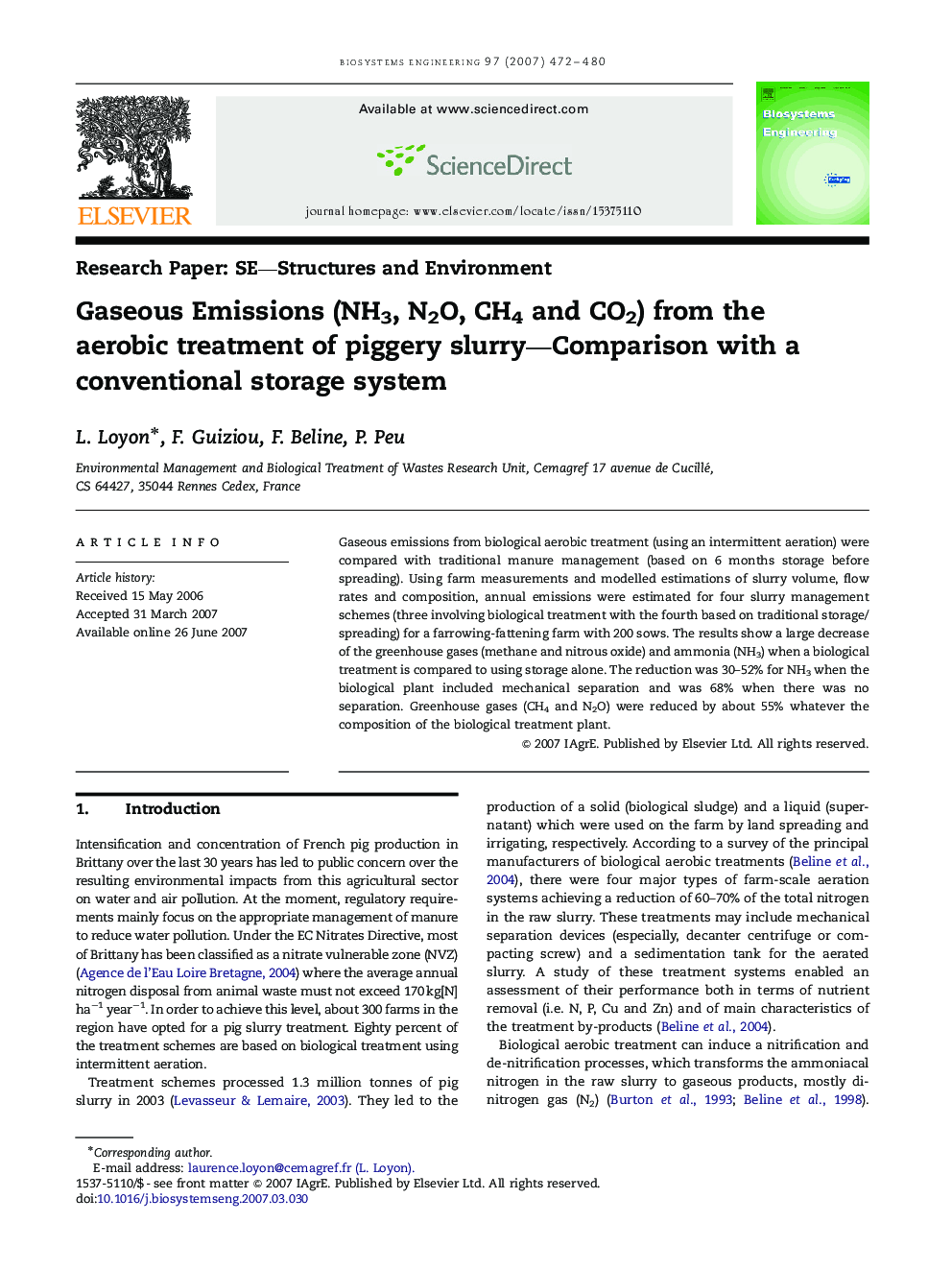| Article ID | Journal | Published Year | Pages | File Type |
|---|---|---|---|---|
| 1712543 | Biosystems Engineering | 2007 | 9 Pages |
Gaseous emissions from biological aerobic treatment (using an intermittent aeration) were compared with traditional manure management (based on 6 months storage before spreading). Using farm measurements and modelled estimations of slurry volume, flow rates and composition, annual emissions were estimated for four slurry management schemes (three involving biological treatment with the fourth based on traditional storage/spreading) for a farrowing-fattening farm with 200 sows. The results show a large decrease of the greenhouse gases (methane and nitrous oxide) and ammonia (NH3) when a biological treatment is compared to using storage alone. The reduction was 30–52% for NH3 when the biological plant included mechanical separation and was 68% when there was no separation. Greenhouse gases (CH4 and N2O) were reduced by about 55% whatever the composition of the biological treatment plant.
